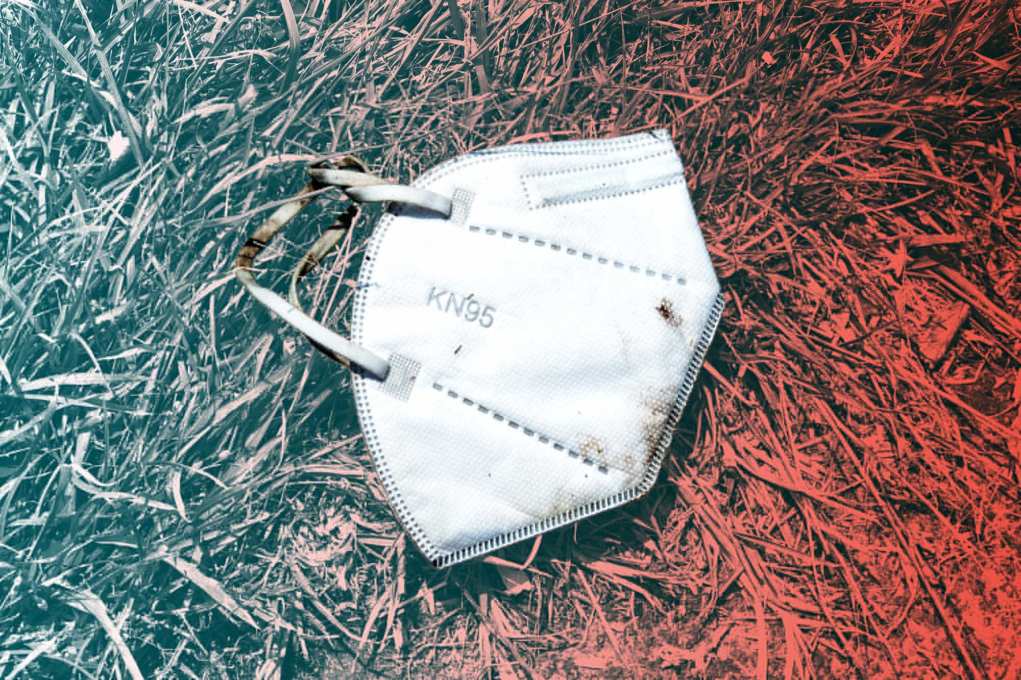
In just a few weeks’ time, the Omicron variant has overtaken Delta to become the dominant strain of COVID-19 in the US, making up 95.4% of all coronavirus infections according to the Centers for Disease Control and Prevention. The reason? While experts aren’t sure why, the variant is not only more transmissible than previous strains, and it’s better able to evade vaccines, leading to more breakthrough infections.
These two factors are why many experts are recommending people upgrade their face masks from cloth coverings to the more robust protection of a surgical mask or what’s known as a respirator (think: N95, KN95, or KF94 masks). But a change in mask also requires a change in how you use and take care of that mask. Those who have gotten used to washing their cloth masks, for example, will have to get used to throwing out surgical masks after every use, if they decide to make the switch.
Dealing with a respirator is a bit different though: You certainly can’t wash them, but they also aren’t single-use—so how exactly do you care for these pieces of PPE? Here, experts help explain how often you should be changing your N95, KN95, or KF94 masks, and whether there’s any legitimate way to clean them, because a face covering is only as effective as how well you use it and take care of it.
How Long Can You Wear A KN95, N95, Or KF94 Mask?
If you typically wear cloth masks, you’re probably used to washing them and reusing them; for surgical mask-users, you’re (hopefully) tossing them in the trash after each use.
Respirators kind of fall in between the two options: You can reuse respirators (without washing in between uses), as long as you’re aware of your personal risk level, and you take care of the mask between uses, Cassandra M. Pierre, an infectious disease physician and medical director of public health programs at Boston Medical Center, tells Health.
There’s no hard-and-fast rule as to how many times you can wear a respirator before throwing it a way. Instead, it’s more important to keep track of where you wear the face covering, and for how long. For people who wear their masks for shorter periods of time or situations where they remain physically distant from others throughout the day, Dr. Pierre says it’s possible to use the same respirator for up to a week. But for people in high-risk settings, like health care facilities, it’s best to toss the mask after a day.
Of course, each time you use a respirator—if you’re using it more than once—you should make sure it’s still in good condition. “We recommend every time you use a respirator, you’re making sure there are no tears, gaps, or evidence of soiling on the surface,” Dr. Pierre tells Health. “All these things can impair the integrity and filtration ability of the mask.”
There are some pretty key ways to tell if your respirator has lost its integrity. First and foremost, if the mask has loosened on your face and no longer has a tight seal, it should be replaced, Jade Flinn, MSN, a nurse educator for the Biocontainment Unit at Johns Hopkins Medicine, tells Health. If the mask is visibly dirty on the inside from makeup, body oil, sweat, or other forms of moisture, you should also toss it, she says.
How Should You Store KN95, N95, And KF95 Masks Between Uses?
Since you can wear a respirator more than once—and because cleanliness is an important factor in reusing your mask—you’ll want to store them properly between wears. That starts with how you take your respirator off, which should be with clean hands and by the ear straps, so you don’t touch the front, which may have accumulated some virus particles.
Once you’ve removed the mask from your face, you’ll want to store it in a safe, clean space—not in your purse or on the rearview mirror in your car. “Keep it away from anything you’ll be touching,” says Flinn. “Putting it in a paper bag so it’s covered and not getting mixed up with other things can help, along with helping it dry out.” According to Dr. Pierre, a plastic food storage container works too, but only if you keep the lid slightly open to prevent condensation on the mask. A harder container can also help retain the structure of the mask.
When it’s time to put your mask on again, wash your hands, then carefully inspect it for damage. If everything looks OK, use the straps to put it on, and avoid touching the outside of the mask. Make sure the respirator fits snugly to your face, then, wash your hands again.
Can You Disinfect Or Clean Your KN95, N95, Or KF95 Mask To Extend Its Use?
Unfortunately, there aren’t any ways to disinfect or clean respirators that are available to the general public, according to Flinn. Any potential ways to clean N95 or other respirators—an area of research health agencies are still looking into—require specific strategies only available in laboratory or other health care settings.
One study that often gets attention regarding decontamination of respiratory masks was published in April 2020 on medRxiv, a preprint server for research that has not yet been peer-reviewed. The study, from the National Institutes of Health (NIH), found that four decontamination methods were able to eliminate various levels of “detectable viable virus” from N95 fabric: vaporized hydrogen peroxide (VHP), 70-degree Celsius dry heat, ultraviolet light, and 70% ethanol spray. The decontamination techniques are helpful in health care settings when respirators are in low supply, but aren’t really beneficial for the general public.
There is some science behind storing a respirator in a paper bag between uses, though. While those in health care settings ideally only use a respirator once, the CDC recognized the shortage of N95 respirators in the beginning of the pandemic and offered options to health care workers—one suggestion being store the mask in a paper bag for a minimum of five days. The CDC instructed health care workers to have five N95 respirators for each day of the week, storing them for a minimum of five days between uses. According to the CDC, this provided time for some pathogens on the mask to “die off” while in the bag. But even then, the CDC recommended N95s weren’t worn more than five separate times.
Important Notice: This article was originally published at www.health.com by Ashley Abramson where all credits are due.
Disclaimer
The watching, interacting, and participation of any kind with anything on this page does not constitute or initiate a doctor-patient relationship with Dr. Farrah®. None of the statements here have been evaluated by the Food and Drug Administration (FDA). The products of Dr. Farrah® are not intended to diagnose, treat, cure, or prevent any disease. The information being provided should only be considered for education and entertainment purposes only. If you feel that anything you see or hear may be of value to you on this page or on any other medium of any kind associated with, showing, or quoting anything relating to Dr. Farrah® in any way at any time, you are encouraged to and agree to consult with a licensed healthcare professional in your area to discuss it. If you feel that you’re having a healthcare emergency, seek medical attention immediately. The views expressed here are simply either the views and opinions of Dr. Farrah® or others appearing and are protected under the first amendment.
Dr. Farrah® is a highly experienced Licensed Medical Doctor certified in evidence-based clinical nutrition, not some enthusiast, formulator, or medium promoting the wild and unrestrained use of nutrition products for health issues without clinical experience and scientific evidence of therapeutic benefit. Dr. Farrah® has personally and keenly studied everything she recommends, and more importantly, she’s closely observed the reactions and results in a clinical setting countless times over the course of her career involving the treatment of over 150,000 patients.
Dr. Farrah® promotes evidence-based natural approaches to health, which means integrating her individual scientific and clinical expertise with the best available external clinical evidence from systematic research. By individual clinical expertise, I refer to the proficiency and judgment that individual clinicians acquire through clinical experience and clinical practice.
Dr. Farrah® does not make any representation or warranties with respect to the accuracy, applicability, fitness, or completeness of any multimedia content provided. Dr. Farrah® does not warrant the performance, effectiveness, or applicability of any sites listed, linked, or referenced to, in, or by any multimedia content.
To be clear, the multimedia content is not intended to be a substitute for professional medical advice, diagnosis, or treatment. Always seek the advice of your physician or other qualified health providers with any questions you may have regarding a medical condition. Never disregard professional medical advice or delay in seeking it because of something you have read or seen in any website, video, image, or media of any kind. Dr. Farrah® hereby disclaims any and all liability to any party for any direct, indirect, implied, punitive, special, incidental, or other consequential damages arising directly or indirectly from any use of the content, which is provided as is, and without warranties.








